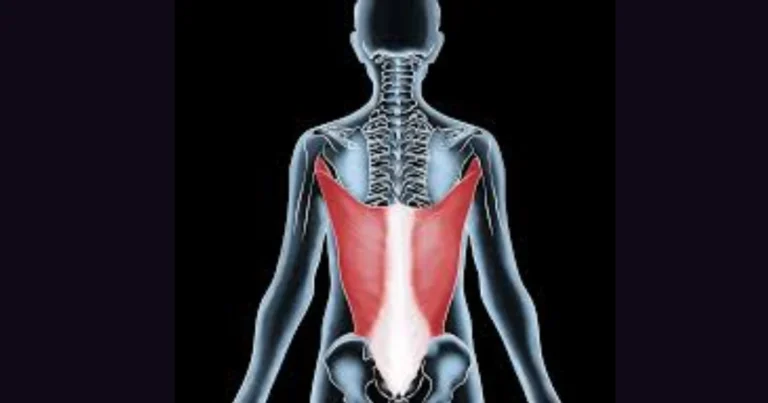Understanding T bar Rows: Benefits, Techniques, and Variations
Tbar rows (also referred to as T-bar rows) are an exercise used in strength training that targets the upper back, lats and other muscle groups in a compound movement. Popular among bodybuilders and fitness enthusiasts for its ability to build strength and muscle mass. We will explore here the benefits of T-bar rows as well as proper techniques for execution as well as variations to add variety into your workouts and frequently asked questions (FAQs).
What Are T Bar Rows?
T-bar rows are an effective resistance exercise performed using either a T-bar row machine or barbell with one end secured, wherein pulling the bar towards your torso while maintaining a bent-over position engages multiple muscle groups of your upper body and may help strengthen back muscles.
Benefits of T-Bar Rows
- Target Multiple Muscle Groups: T-bar rows work many muscle groups simultaneously, including the lats, rhomboids, trapezius (traps) and biceps to deliver comprehensive upper body development. This compound movement offers the added bonus of being non-weight bearing.
- Strengthen Upper Back Muscles to Improve Posture: Strengthening upper back muscles helps counteract the effects of long periods spent sitting or poor ergonomics on posture.
- increase muscle definition by including T-bar rows into your exercise regime regularly.These exercises Can Lead to Better Muscle Definition in Back Area
- Increases Functional Strength: T-bar rows’ pulling motion simulates everyday lifting and carrying activities, providing an effective means of strengthening overall functional strength.
- Versatility: These exercises can be performed using different grips and attachments for maximum muscle group targeting effectiveness.

Statistics on Strength Training
- According to the American College of Sports Medicine (ACSM), strength training can increase muscle mass by 1-2% per month in untrained individuals.
- Studies published in The Journal of Strength and Conditioning Research demonstrated that compound exercises such as T-bar rows lead to greater increases in overall strength than isolation exercises, according to research published in that journal.
Proper Technique for Performing T-Bar Rows
Follow these steps to ensure the safest and most efficient T-bar rows:
Equipment Setup
- To begin, set up your equipment. A T-bar row machine or barbell anchored at one end are both great ways to create your setup for rowing T-bar rows.
- Add Weights: Based on your fitness level, load an appropriate amount of weight onto the barbell or machine.
Execution Steps
Starting Position: For optimal results, position both feet shoulder-width apart when starting this exercise routine.Bend at your hips and knees while keeping your back straight. Clamp your grip securely onto the handles or bar for the exercise.
Pulling Motion:
Engage your core and pull the bar towards your lower chest or abdomen. Keep your elbows close to your body as you retract shoulder blades at the peak of the movement and squeeze back muscles at its peak contraction point.
Lowering Phase: SLOWLY return the bar back to its starting position while maintaining control. Avoid rounding your back; maintain it straight throughout this movement.
Repetitions: for 3-4 sets, complete 8-12 repetitions using various weights as necessary.
Table: Key Points to Proper Form
| Step | Key Points |
| Starting Position | Feet shoulder-width apart; back straight |
| Grip | Firm grip on handles or bar |
| Pulling Motion | Pull towards lower chest; elbows close to body |
| Lowering Phase | Control descent; maintain straight back |
| Repetitions | 8-12 reps for 3-4 sets |
Variations of T-Bar Rows
- To keep your workouts interesting and target different areas of the back, try these variations of T-Bar Rows:
- Single Arm T-Bar Row: When performing this exercise with one arm at a time, each side of your back can be targeted individually.
- Wide Grip T-Bar Row: Use a wider grip to target outer lats and improve overall width, while an Underhand Grip T-Bar Row can shift focus onto different muscle groups within your back.
- Chest Supported T-Bar Row: Use a bench as support to isolate back muscles more efficiently while relieving strain from lower back.
Common Mistakes to Avoid
- Poor Posture: Stay upright by maintaining neutral spine alignment during movement.
- Starting With Manageable Weight: To ensure proper form, start off with manageable weights before progressing to more challenging ones.
- Rushing Through Reps: Focus on slow controlled movements for the best results.
- Neglecting Warm-Up: Always warm-up prior to engaging in any strength training exercises to avoid injury. T-Bar Row
FAQs
Q1: Are T-Bar Rows suitable for Beginners?
A1: Yes! Beginners can benefit from T-bar rows by starting with lighter weights and focusing on proper form. mes Q2: How often should T-bar rows be included in my workout regime? A2: To optimize results, aim to include T-bar rows 1-2 times weekly as part of a balanced strength training program.
Q3: Can T-bar rows help lower back pain?
A3: You should consult with a healthcare provider prior to engaging in any exercises if you already experience lower back discomfort or injuries.
Q4: What equipment am I required to perform T-bar rows?
A4: There are a couple of options for T-bar row machines or you could rig one yourself by anchoring one end of a barbell with rope.
Q5: Can T-bar rows compare with other rowing exercises?
A5: T-bar rows specifically target middle-back muscles while providing stability; other rowing variations may engage different muscle groups depending on form and grip.
Conclusion
T-bar rows are an effective exercise for developing upper body strength and increasing overall muscle definition. With proper technique, variations, and the avoidance of common mistakes, T-bar rows can add value to any fitness regime – whether beginner or experienced lifter alike! Including T-bar rows into your workout can contribute toward meeting fitness goals more quickly.







